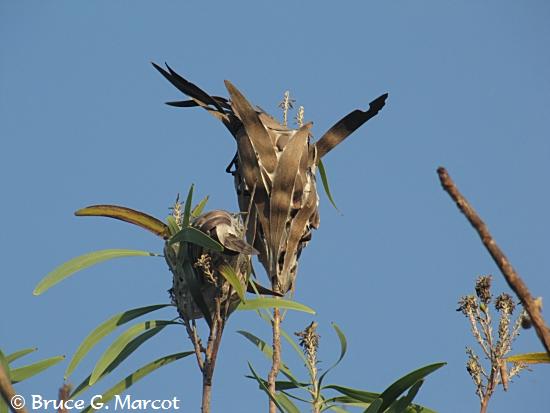|
Explanation: Welcome to the sweltering tropical forests of north-central Australia. Just as beads of sweat crawled across my skin after a long hike into a remote forest park, so were the trees alive with crawling insects ... in this case, green tree ants. These are fascinating cousins of
carpenter ants of the same zoological family Formicidae, but they have such a
different ecology. Green tree ants -- also called weaver
ants -- construct nests in shrubs and trees by bending large leaves and
stitching them together with silk from the ants' larvae.
Green tree ants are predatory on other invertebrates and thereby likely play key ecological roles throughout their range in northern Australia and southern Asia, by helping to control some insect pests and recycling their nutrients. In northern Australia -- the tropical "Top End" of Northern Territory -- the aboriginal name of the ant is mukkul or gojjorn. Local people would crush the nest and eat the juice. Apparently, the green abdomen actually has a lime taste -- quite different than the formic acid taste of carpenter ants of the same family found in the New World. And in some accounts, larvae of green tree ants are also eaten or are crushed in water to make a drink. But the ants will bite, so for us non-natives it is best to leave them to their ecological roles.
|


